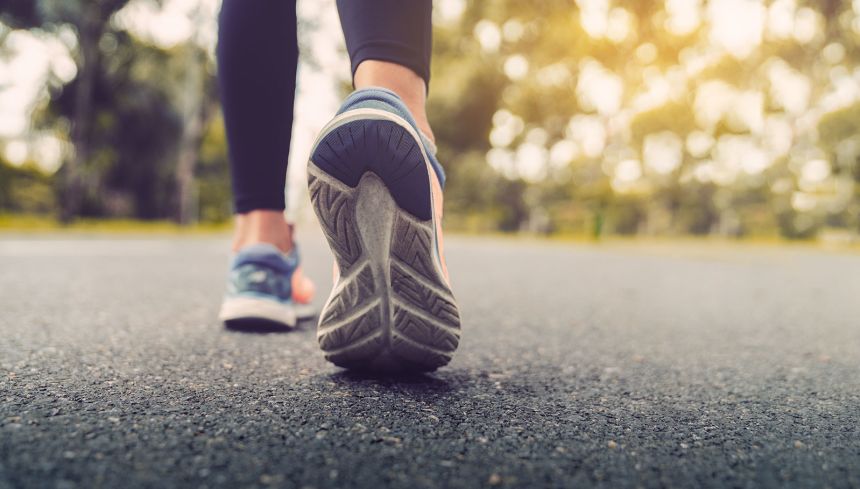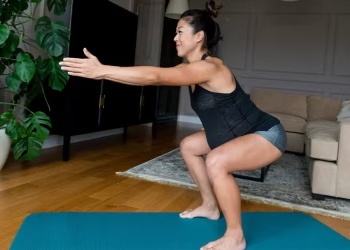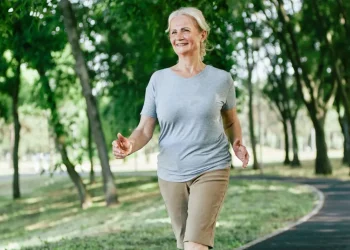In our fast-paced world, where high-intensity workouts and marathon training dominate fitness conversations, there’s a gentle yet profoundly effective practice that often goes overlooked: slow walking. This simple activity, which our ancestors practiced naturally, offers remarkable health benefits that extend far beyond what many people realize. Whether you’re recovering from illness, managing chronic conditions, or simply seeking a more mindful approach to movement, slow walking provides a accessible pathway to improved physical and mental wellbeing.
Understanding Slow Walking
Slow walking, sometimes called mindful walking or contemplative walking, involves moving at a deliberately reduced pace—typically between 1.5 to 2.5 miles per hour, compared to the average walking speed of 3 to 4 miles per hour. This isn’t merely a slower version of regular walking; it’s a intentional practice that emphasizes awareness, breath, and connection with your body and surroundings. Think of it as meditation in motion, where each step becomes an opportunity for presence and healing.
The practice has roots in various traditions, including Buddhist walking meditation (kinhin) and the Japanese practice of shinrin-yoku, or forest bathing. However, you don’t need any special training or equipment to benefit from slow walking—just the willingness to decelerate and pay attention.
Cardiovascular Benefits: Gentle Yet Effective
While slow walking may seem too mild to benefit your heart, research reveals a different story. The cardiovascular advantages of this gentle practice are both surprising and significant.
Sustainable Heart Health: Slow walking provides cardiovascular conditioning without placing excessive stress on the heart. For individuals with heart conditions, those recovering from cardiac events, or people new to exercise, slow walking offers a safe entry point to cardiovascular fitness. Studies have shown that even low-intensity walking can improve heart rate variability, a key marker of cardiovascular health and autonomic nervous system function.
Blood Pressure Regulation: Regular slow walking has been associated with modest reductions in both systolic and diastolic blood pressure. The gentle, sustained nature of the activity helps blood vessels maintain elasticity and promotes healthy circulation without the dramatic blood pressure spikes that can occur with more vigorous exercise. For people with hypertension, this makes slow walking an ideal complementary therapy alongside medication.
Improved Circulation: The rhythmic muscle contractions during slow walking act as a secondary pump, assisting your heart in moving blood throughout your body. This enhanced circulation delivers oxygen and nutrients more efficiently to tissues and organs while helping remove metabolic waste products. Better circulation means reduced swelling in the extremities, decreased risk of blood clots, and improved overall vascular health.
Cholesterol Management: While the effects may be more gradual than with intense exercise, regular slow walking can contribute to improved lipid profiles. The activity helps increase HDL (good) cholesterol while potentially reducing LDL (bad) cholesterol and triglycerides, particularly when combined with dietary modifications.
Mental Health Benefits: Walking Toward Inner Peace
Perhaps the most transformative benefits of slow walking emerge in the realm of mental health. In an age of constant stimulation and chronic stress, this practice offers a sanctuary for the mind.
Stress Reduction and Cortisol Management: Slow walking activates the parasympathetic nervous system, often called the “rest and digest” system, which counteracts the stress response. Research indicates that mindful walking can significantly reduce cortisol levels, the primary stress hormone. Unlike high-intensity exercise that temporarily elevates cortisol, slow walking provides stress relief without additional physiological stress.
Anxiety Relief: The combination of gentle movement, rhythmic breathing, and mindful awareness makes slow walking particularly effective for managing anxiety. The practice grounds you in the present moment, interrupting the cycle of worried thoughts about the future or rumination about the past. Many practitioners report that slow walking helps them develop a healthier relationship with anxious thoughts, observing them without becoming overwhelmed.
Enhanced Mood and Depression Management: Like other forms of exercise, slow walking stimulates the release of endorphins, the body’s natural mood elevators. However, the meditative quality of slow walking offers additional benefits for depression. The practice encourages gentle self-compassion rather than the self-criticism that can accompany more demanding exercise regimens. Studies have shown that even 10 to 15 minutes of slow, mindful walking can improve mood states and reduce symptoms of mild to moderate depression.
Improved Cognitive Function: Slow walking enhances blood flow to the brain, supporting cognitive health. The practice has been associated with improvements in attention, memory, and executive function. The meditative aspect also strengthens the prefrontal cortex, the brain region responsible for decision-making, focus, and emotional regulation. For older adults, regular slow walking may help preserve cognitive function and reduce the risk of dementia.
Better Sleep Quality: Many people who practice slow walking, particularly in the evening, report improvements in sleep quality. The gentle physical activity helps regulate circadian rhythms without the stimulating effects of vigorous exercise close to bedtime. The stress-reducing benefits also quiet an overactive mind, making it easier to fall asleep and stay asleep.
Metabolic Benefits: Supporting Your Body’s Engine
The metabolic advantages of slow walking demonstrate that you don’t need to exhaust yourself to support healthy metabolism and weight management.
Blood Sugar Regulation: One of the most significant metabolic benefits of slow walking is its effect on blood glucose. Even a short slow walk after meals can help regulate blood sugar levels by facilitating glucose uptake into muscles. This is particularly valuable for people with diabetes or prediabetes. Studies have shown that a 15-minute slow walk after meals can reduce post-meal blood sugar spikes more effectively than a single 45-minute walk at another time of day.
Insulin Sensitivity: Regular slow walking improves insulin sensitivity, meaning your cells become more responsive to insulin and better able to absorb glucose from the bloodstream. This reduced insulin resistance is crucial for preventing and managing type 2 diabetes and metabolic syndrome.
Fat Metabolism: While slow walking burns fewer calories per minute than vigorous exercise, it preferentially uses fat as fuel. At lower exercise intensities, your body relies more heavily on fat oxidation rather than carbohydrate metabolism. For individuals focused on sustainable fat loss or metabolic health, this makes slow walking an excellent complement to other lifestyle interventions.
Digestive Health: The gentle movement of slow walking stimulates digestive processes, helping move food through the gastrointestinal tract. Many people find that a slow walk after meals reduces bloating, supports regular bowel movements, and improves overall digestive comfort. The stress-reducing effects also benefit gut health, as stress significantly impacts digestive function.
Metabolic Sustainability: Unlike intense exercise that can stress the body and potentially disrupt metabolism when overdone, slow walking provides metabolic benefits without triggering excessive inflammatory responses or hormonal disruptions. This makes it sustainable for daily practice, allowing you to accumulate health benefits over time.
Additional Health Benefits
Beyond the cardiovascular, mental, and metabolic advantages, slow walking offers numerous other health benefits:
Joint Health: The low-impact nature protects joints while maintaining mobility and lubricating joint spaces. This makes it ideal for people with arthritis or joint pain.
Balance and Coordination: The mindful attention to movement improves proprioception and balance, reducing fall risk, especially in older adults.
Immune Function: Moderate, regular exercise like slow walking supports immune system function without the immunosuppressive effects that can follow very intense exercise.
Longevity: Research consistently shows that regular walking, even at slow paces, is associated with increased lifespan and healthspan—the number of years lived in good health.
How to Practice Slow Walking
To maximize the benefits of slow walking, consider these guidelines:
Start Where You Are: Begin with just 5 to 10 minutes and gradually increase duration as it feels comfortable. Even brief sessions provide benefits.
Choose Your Environment: Select a safe, pleasant location where you can walk without obstacles. Natural settings offer additional benefits, but any quiet space works.
Focus on Form: Stand tall with relaxed shoulders. Let your arms swing naturally. Place each foot deliberately, feeling the ground beneath you.
Breathe Mindfully: Coordinate your breathing with your steps. Try breathing in for three or four steps, then out for three or four steps.
Engage Your Senses: Notice what you see, hear, smell, and feel. This sensory awareness anchors you in the present moment.
Release Expectations: This isn’t about distance or speed. Let go of performance goals and simply be with the experience.
Make It Regular: Aim for daily practice, even if brief. Consistency matters more than duration.
Conclusion
Slow walking represents a profound shift from our culture’s obsession with intensity and speed. It reminds us that health and wellbeing don’t require punishment or extremes—sometimes the gentlest approaches yield the deepest transformations. Whether you’re managing chronic health conditions, recovering from illness, dealing with stress and anxiety, or simply seeking a more peaceful relationship with movement, slow walking offers an accessible, sustainable practice with far-reaching benefits.
The beauty of slow walking lies in its simplicity and inclusivity. It requires no special equipment, no gym membership, no advanced fitness level. It meets you exactly where you are and invites you to move—not away from yourself, but deeper into presence, awareness, and wellbeing. In our hurried world, the revolutionary act of moving slowly might be exactly what your body, mind, and spirit need.
So step outside, slow down, and discover what this ancient, simple practice can do for your health. Your heart, mind, and metabolism will thank you.
- what is tai chi walking – the art of slow movement
- comprehensive benefits of mindful walking
- finding optimal slow pace
- mindful slow walking practice
- meditation benefits of slow movement
- mindfulness through slow walking
- finding stillness in slow motion
- stress relief from slow walking
- body awareness in slow movement
- gentle slow movement practices






